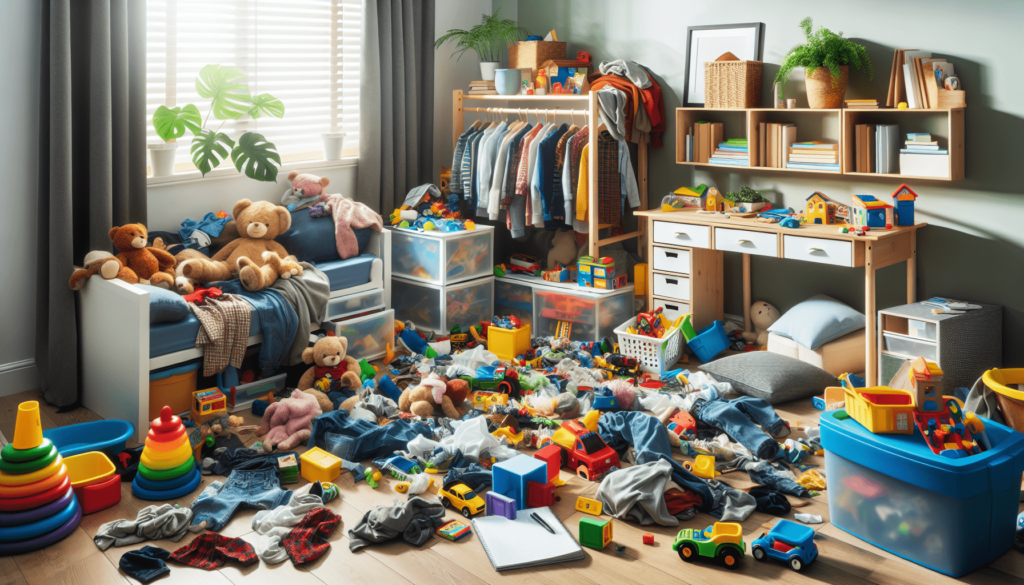How Do I Make Sure Kids Keep Their Rooms Tidy?
Keeping your child’s room tidy can be a constant struggle, but with the right strategies in place, you can make the process easier and more manageable for both you and your child. In this article, we will discuss a variety of tips and tricks to help ensure your child’s room stays organized and clutter-free.
Setting Clear Expectations
The first step in ensuring your child keeps their room tidy is to set clear expectations. Sit down with your child and explain the importance of keeping their room clean and organized. Clearly outline what is expected of them and why maintaining a tidy space is essential.
When talking to your child about keeping their room tidy, be sure to emphasize the benefits of an organized space. Explain how a clean room can help them find their belongings more easily, create a peaceful environment for rest and relaxation, and foster a sense of responsibility.
Establishing a Routine
Consistency is key when it comes to maintaining a tidy room. Help your child establish a daily or weekly cleaning routine that fits into their schedule. This could include making the bed, putting away toys, picking up dirty laundry, and organizing personal belongings.
Make cleaning fun by turning it into a game or setting a timer to see how quickly your child can tidy their room. By making cleaning a regular part of their routine, your child will be more likely to keep their room tidy without constant reminders.

Decluttering Regularly
One of the most effective ways to keep a room tidy is to declutter regularly. Encourage your child to go through their belongings every few months and donate, sell, or toss items they no longer need or use.
Teach your child the importance of letting go of items that are damaged, no longer fit, or are no longer of interest to them. By keeping only what they truly need and love, your child’s room will stay organized and clutter-free.
Providing Adequate Storage Solutions
Effective storage solutions are essential for keeping a child’s room tidy. Invest in bins, shelves, baskets, and other organizational tools to help your child store their belongings in an organized manner.
Label bins and baskets to make it easier for your child to identify where each item belongs. Consider using storage solutions that are easy for your child to access and use, such as open bins or hooks at their level.

Involving Your Child in the Process
Involve your child in the process of keeping their room tidy. Encourage them to take ownership of their space by allowing them to help choose storage solutions, decorate their room, and decide how to organize their belongings.
By involving your child in the organization process, they will be more invested in maintaining a tidy room. Encourage them to take pride in their space and celebrate their efforts when they successfully keep their room clean and organized.
Rewarding Good Behavior
Positive reinforcement can be a powerful motivator for children. Consider implementing a reward system for your child when they keep their room tidy for a certain period of time.
Reward your child with a special treat, extra playtime, a small toy, or another incentive that motivates them. Be sure to praise your child for their efforts and acknowledge the hard work they put into keeping their room clean.

Leading by Example
Children often learn by example, so it’s essential to model the behavior you want to see in your child. Keep your own spaces tidy and organized, and your child will be more likely to follow suit.
Make cleaning a family activity by tidying up together or setting aside time each week for a family cleaning session. By demonstrating the importance of organization and cleanliness, you can instill these values in your child and help them develop lifelong habits of tidiness.
Seeking Professional Help
If despite your best efforts, your child continues to struggle with keeping their room tidy, it may be helpful to seek professional assistance. Consider consulting with a child psychologist or organizational expert who can provide additional strategies and support.
A professional can help identify any underlying issues that may be contributing to your child’s struggles with organization and cleanliness. They can also offer personalized advice and techniques tailored to your child’s unique needs.

Conclusion
Keeping kids’ rooms tidy can be a challenge, but with the right strategies in place, you can make the process more manageable and stress-free. By setting clear expectations, establishing a routine, decluttering regularly, providing storage solutions, involving your child in the process, rewarding good behavior, leading by example, and seeking professional help when needed, you can create a clean and organized space that your child will be proud of. Remember, consistency is key, and with time and patience, you can help your child develop lifelong habits of tidiness.

